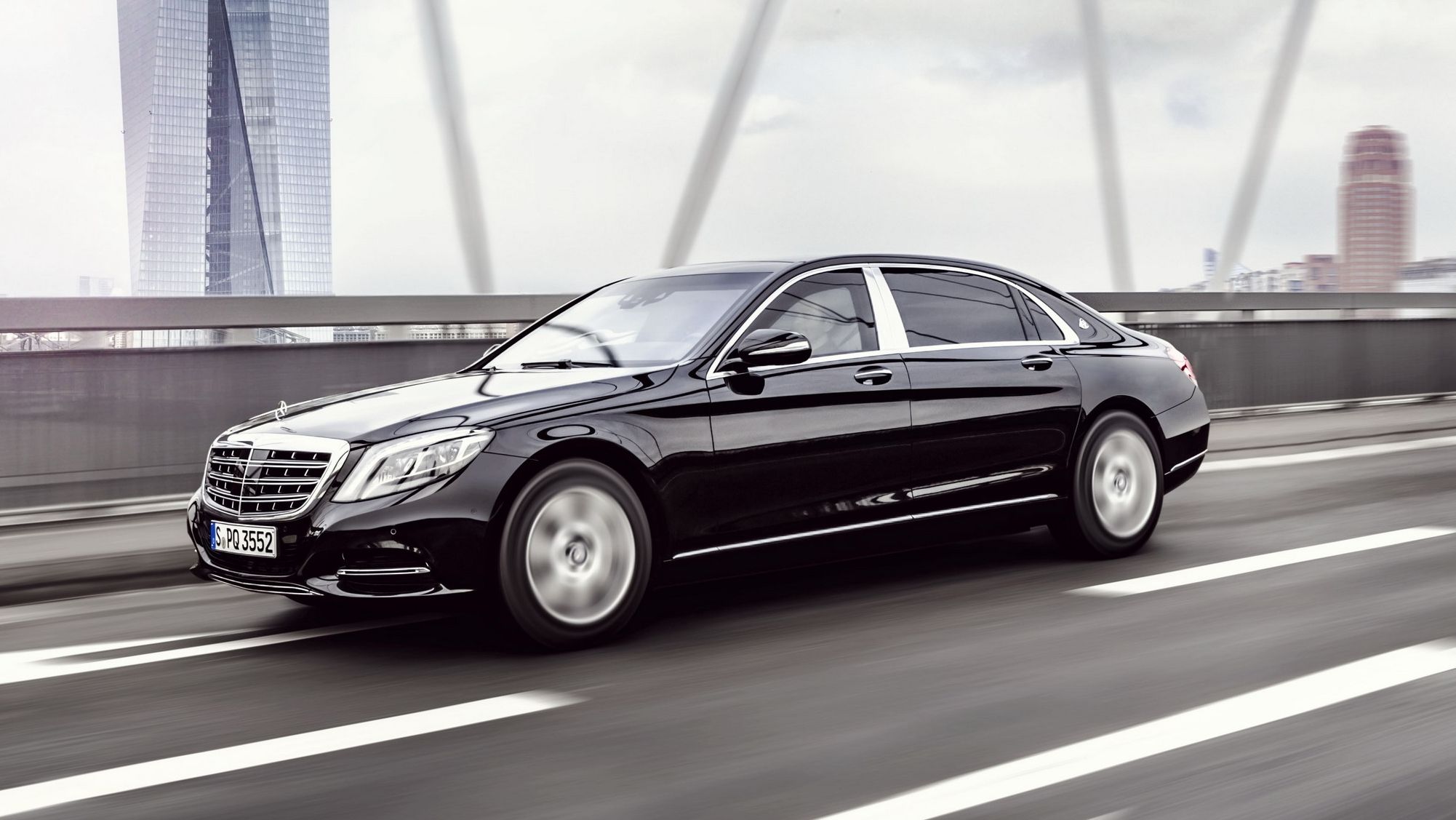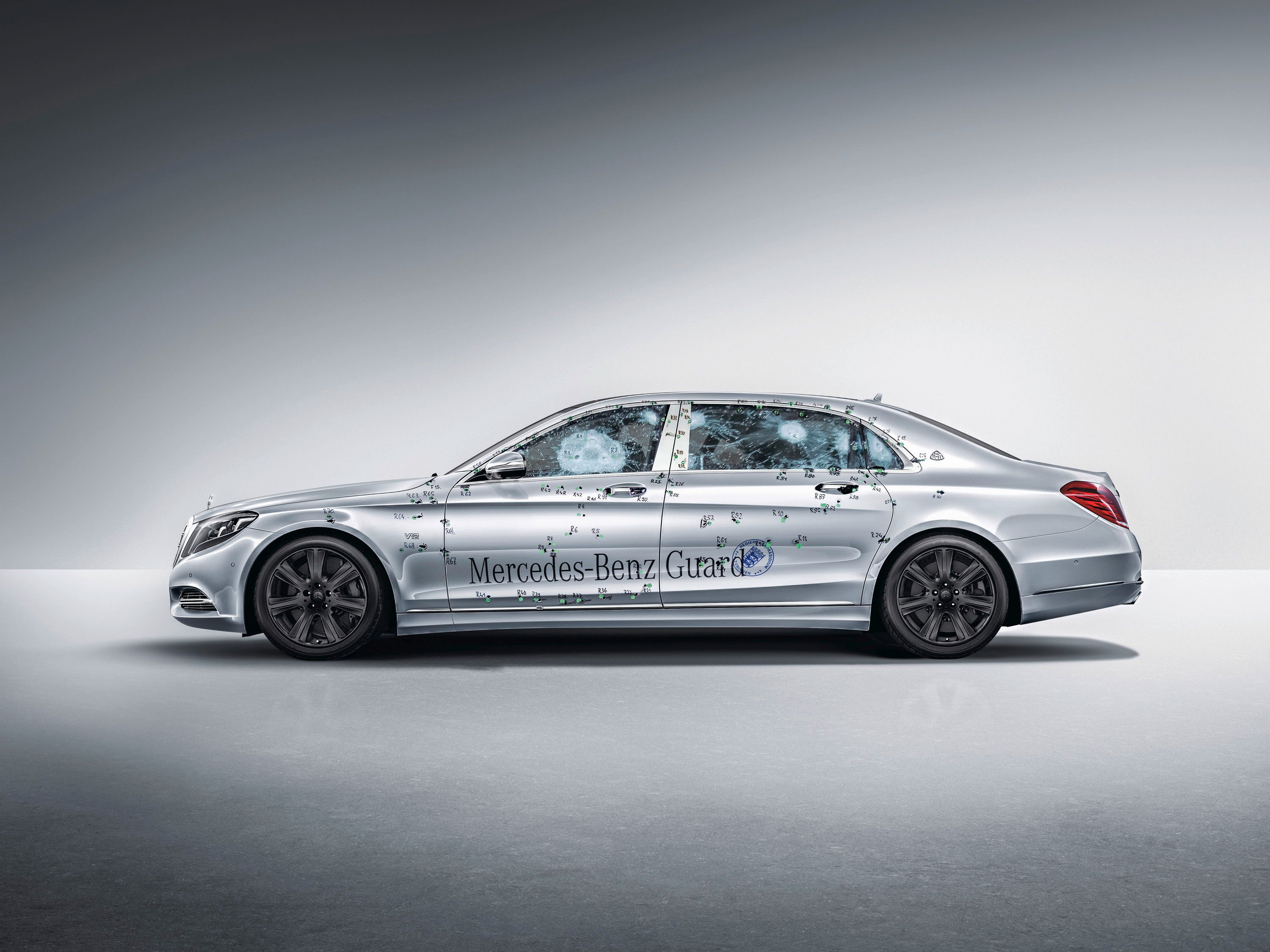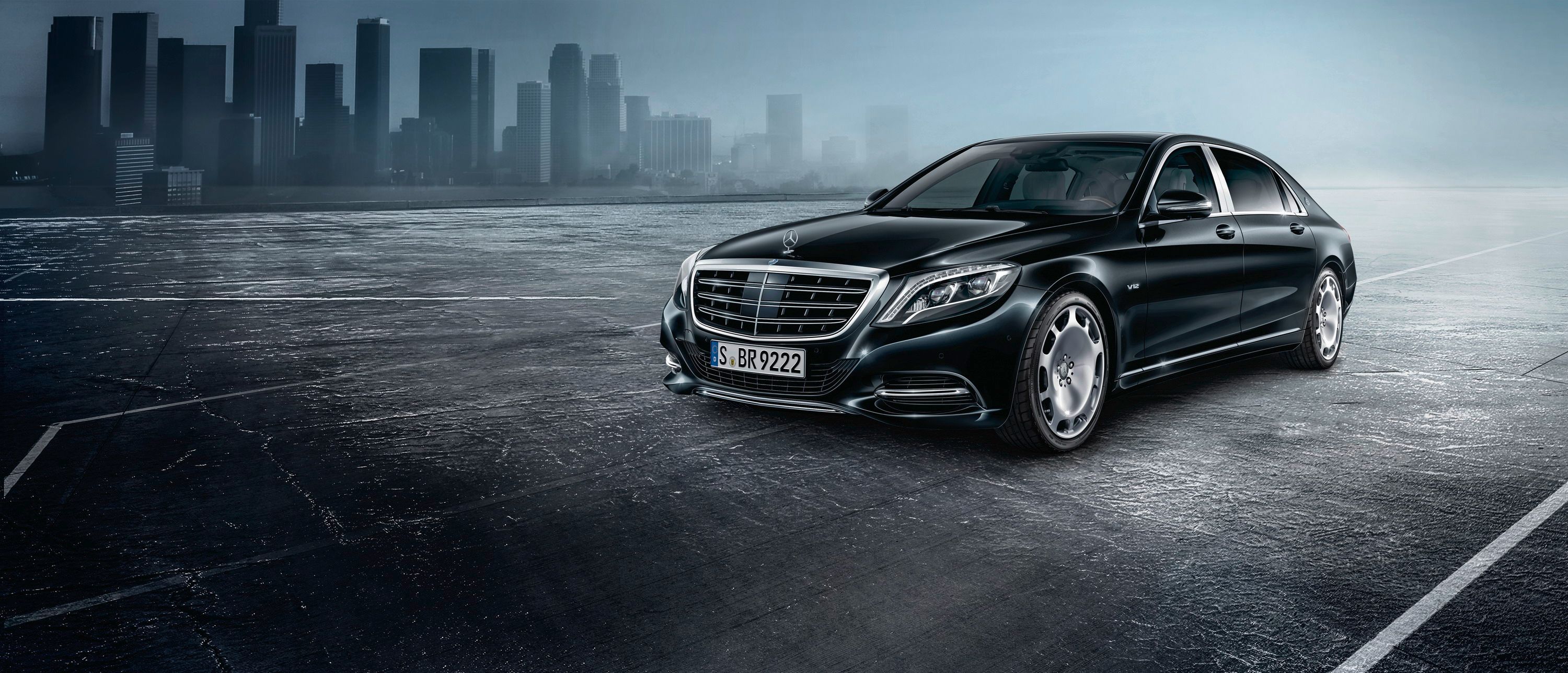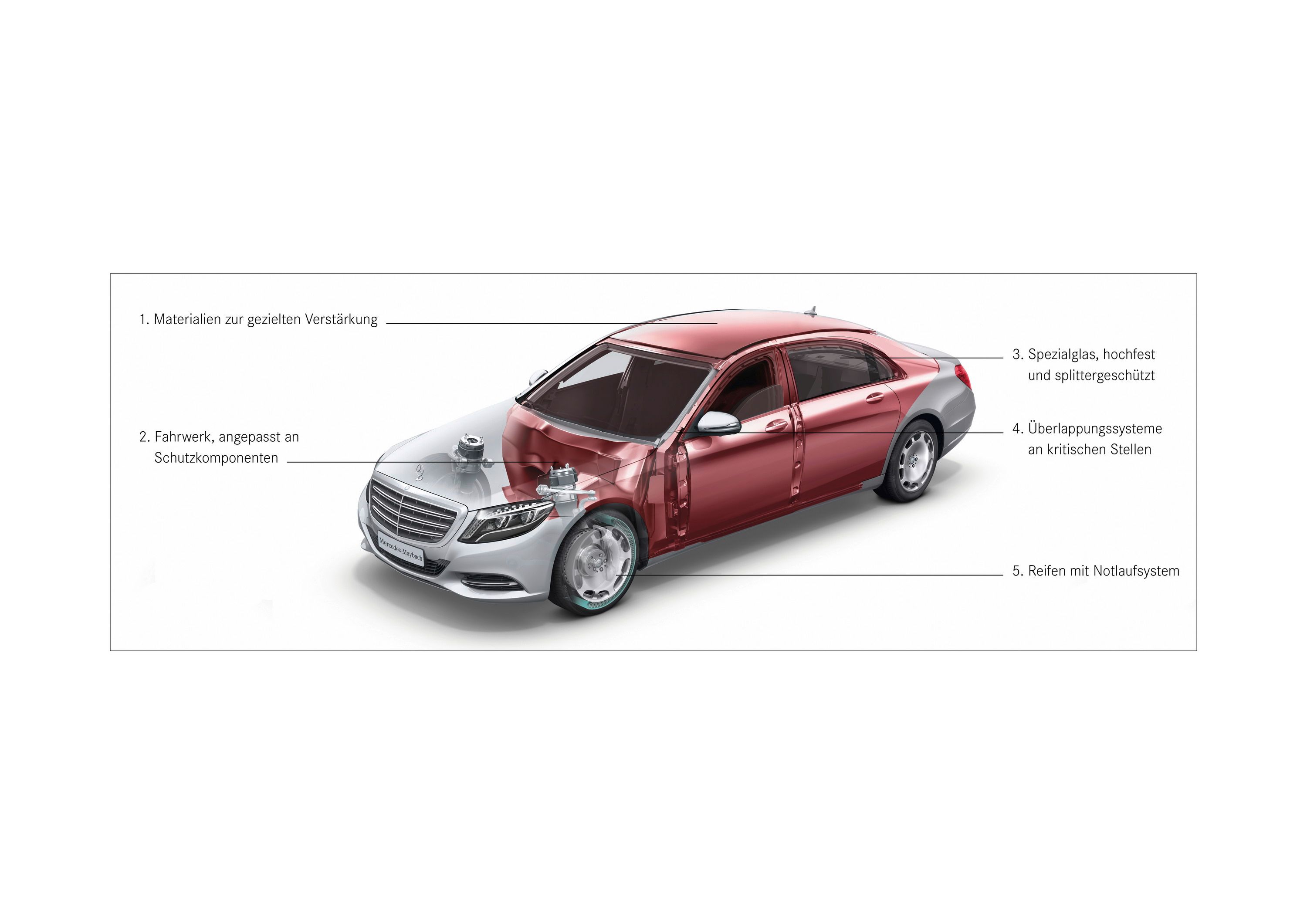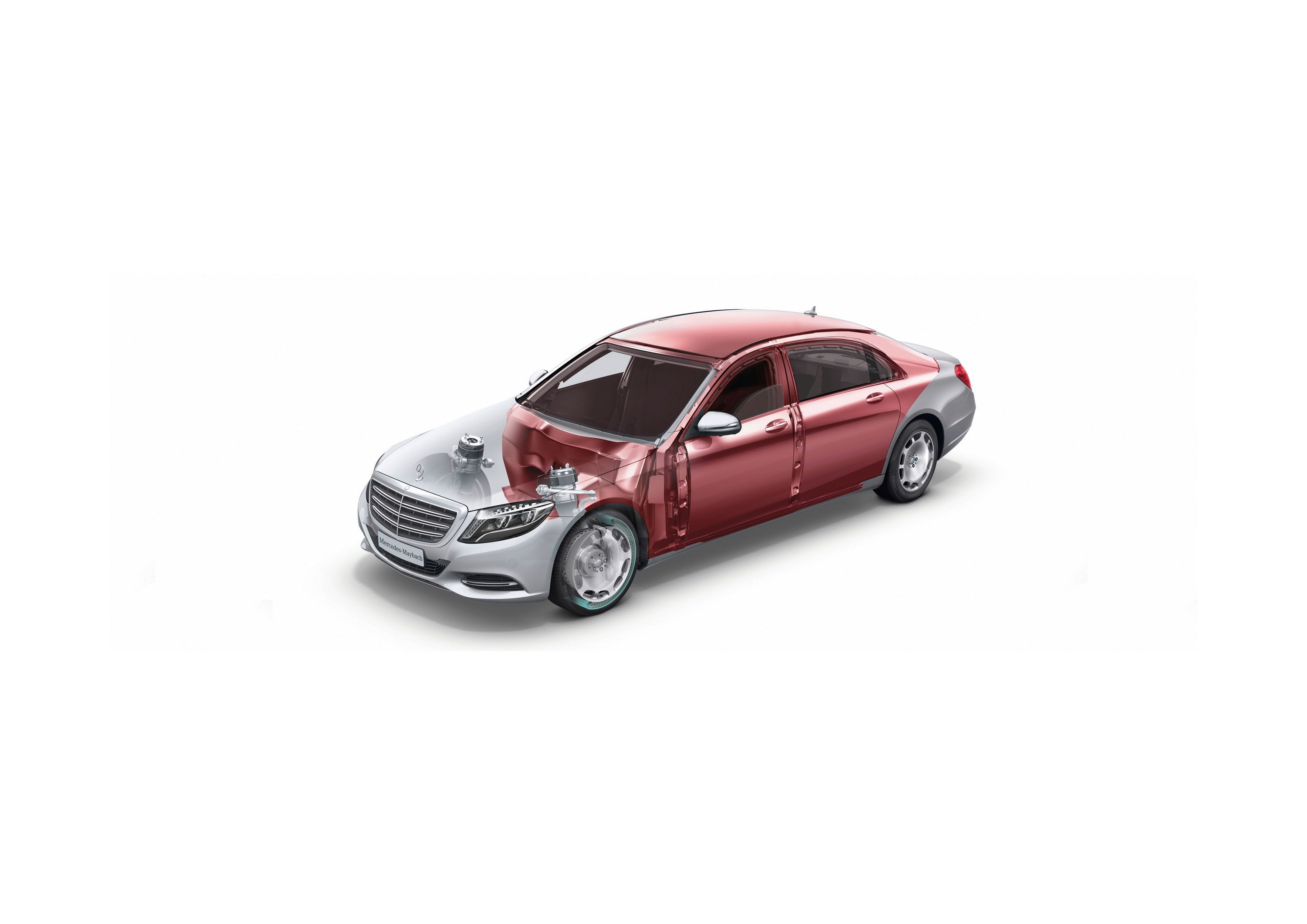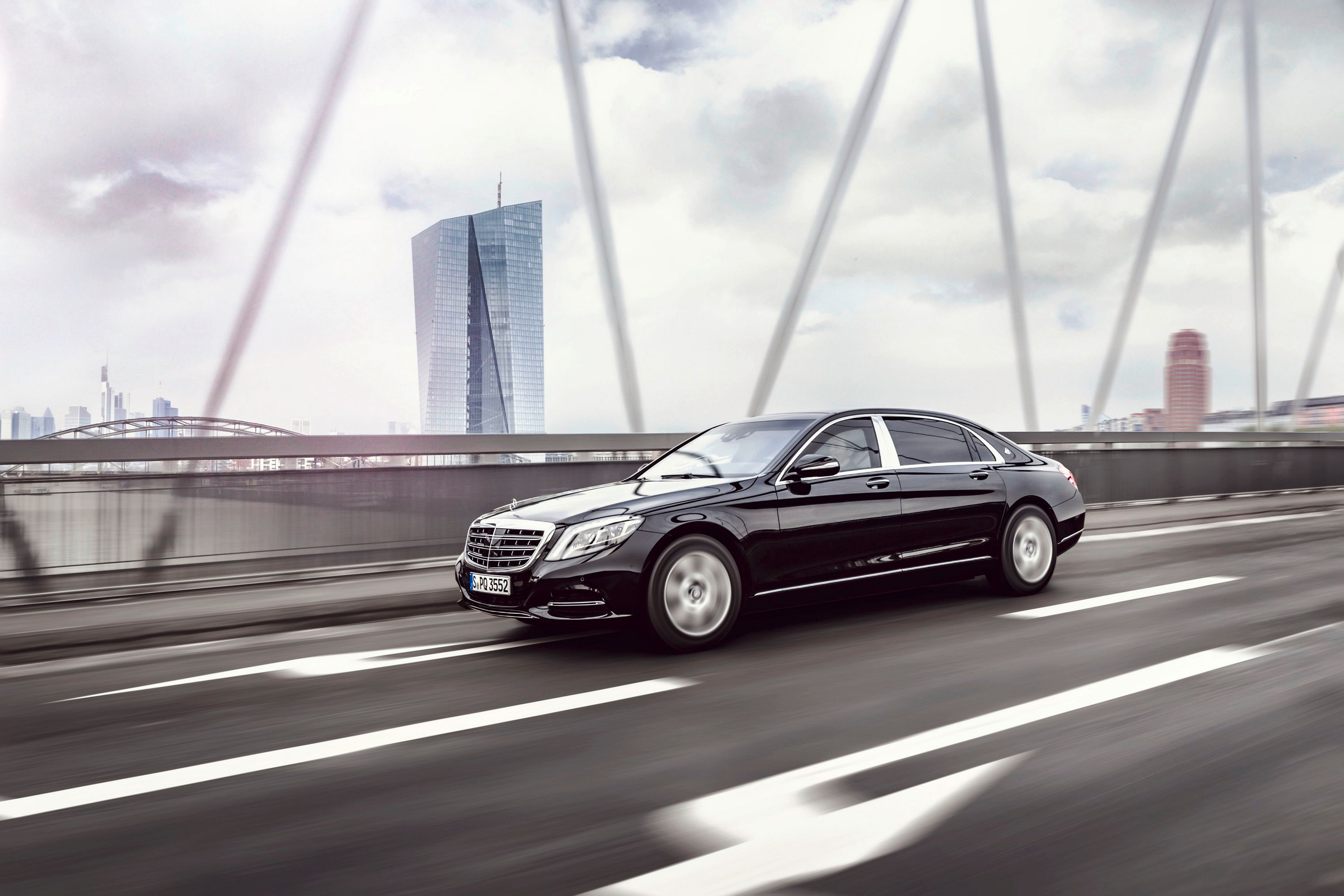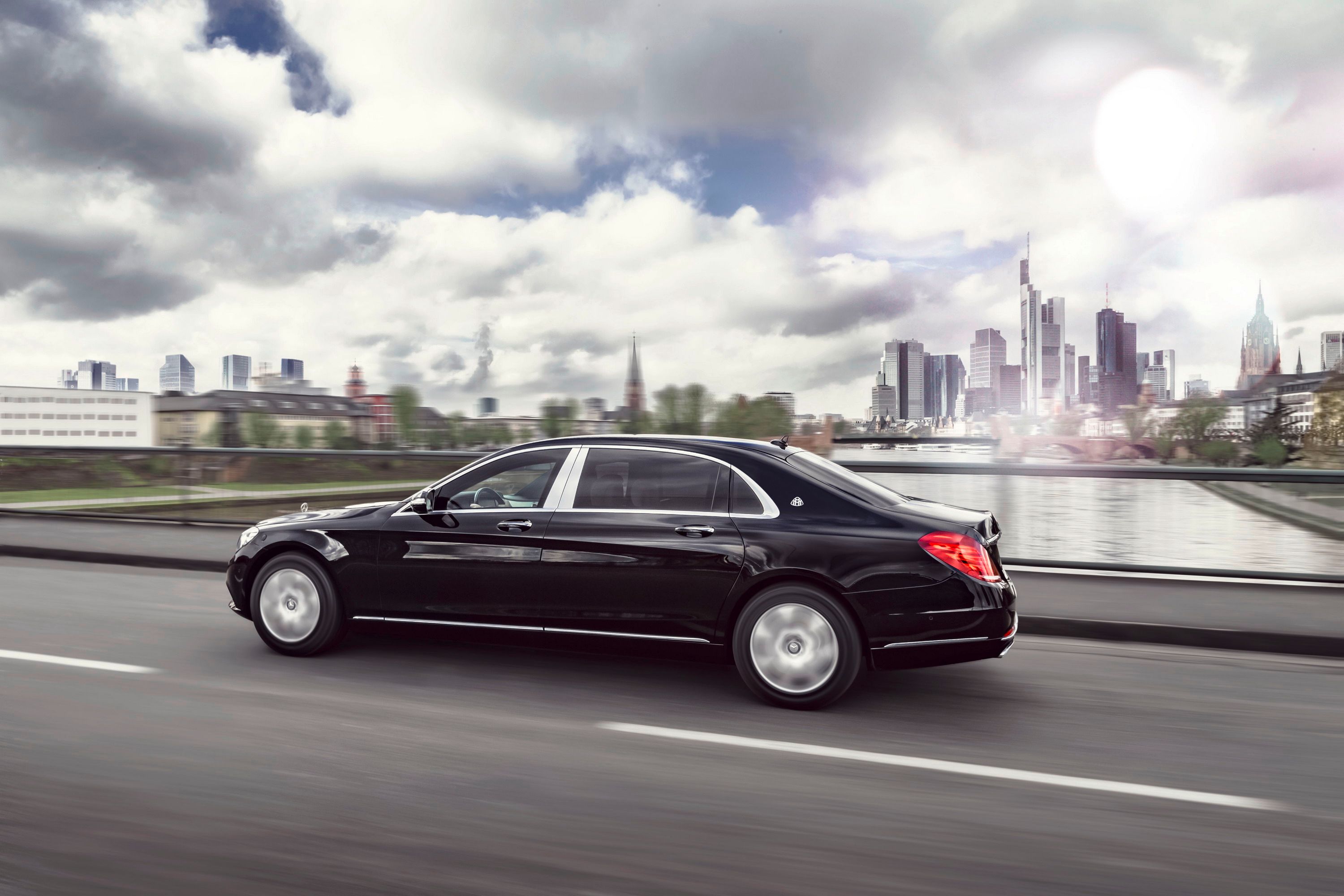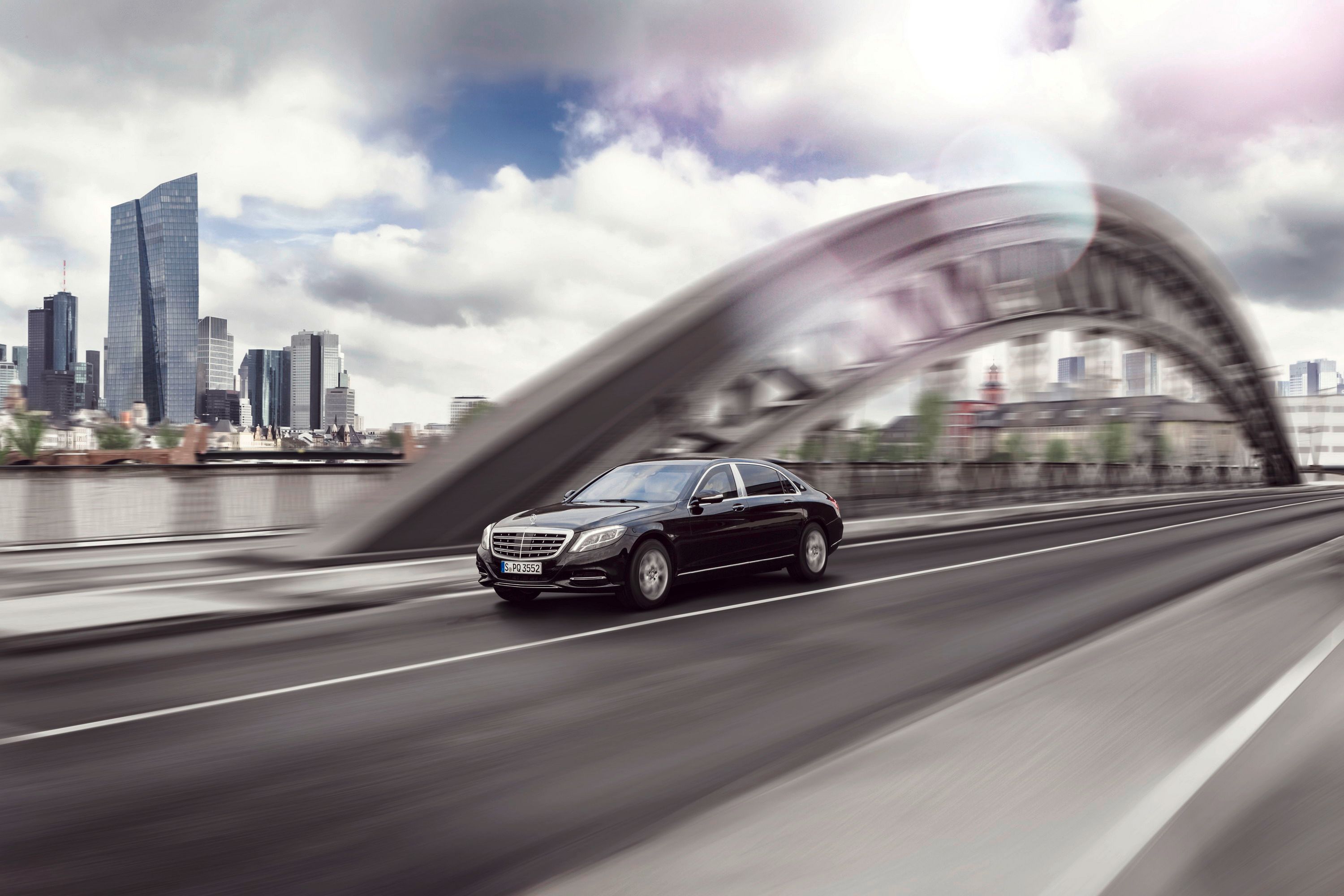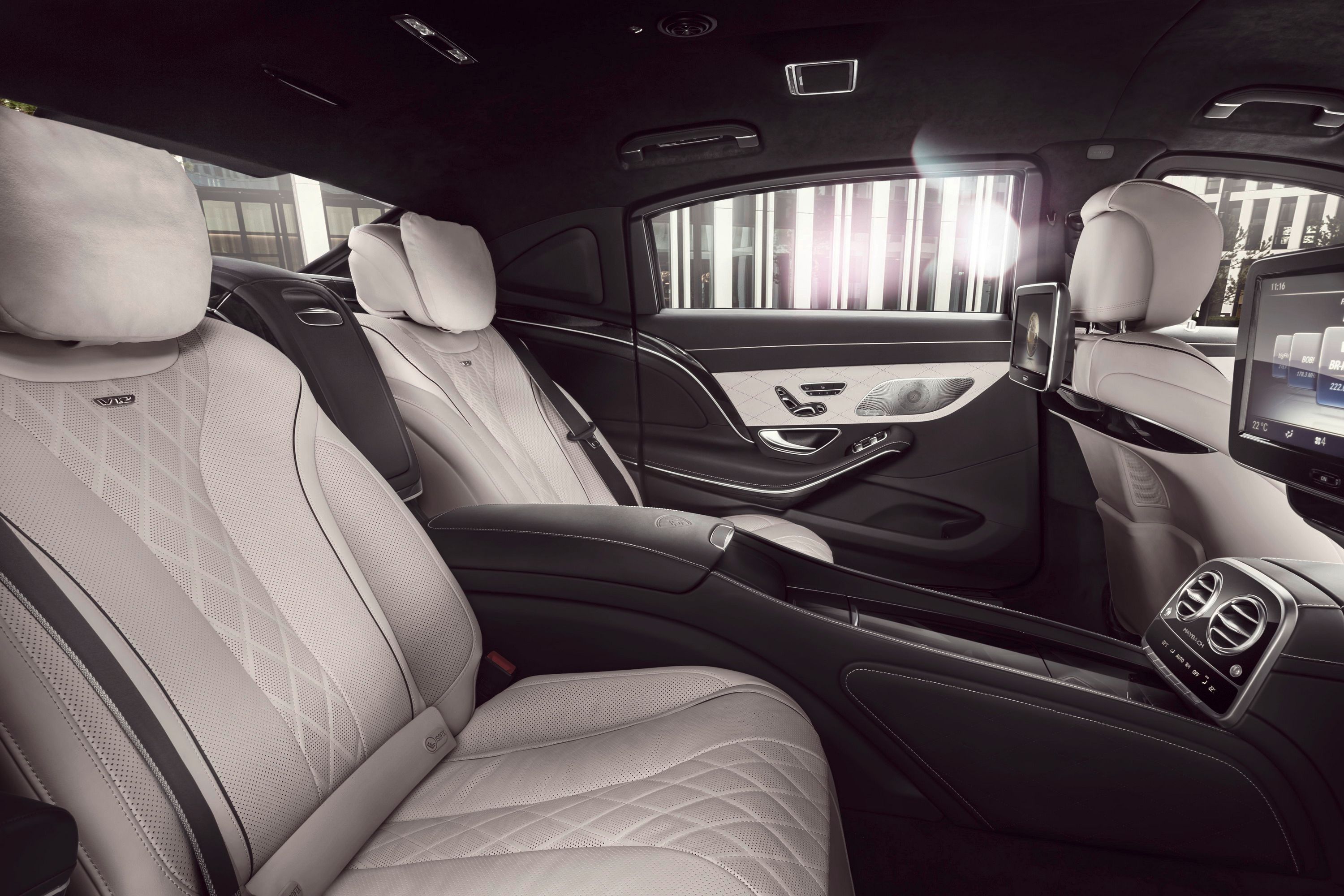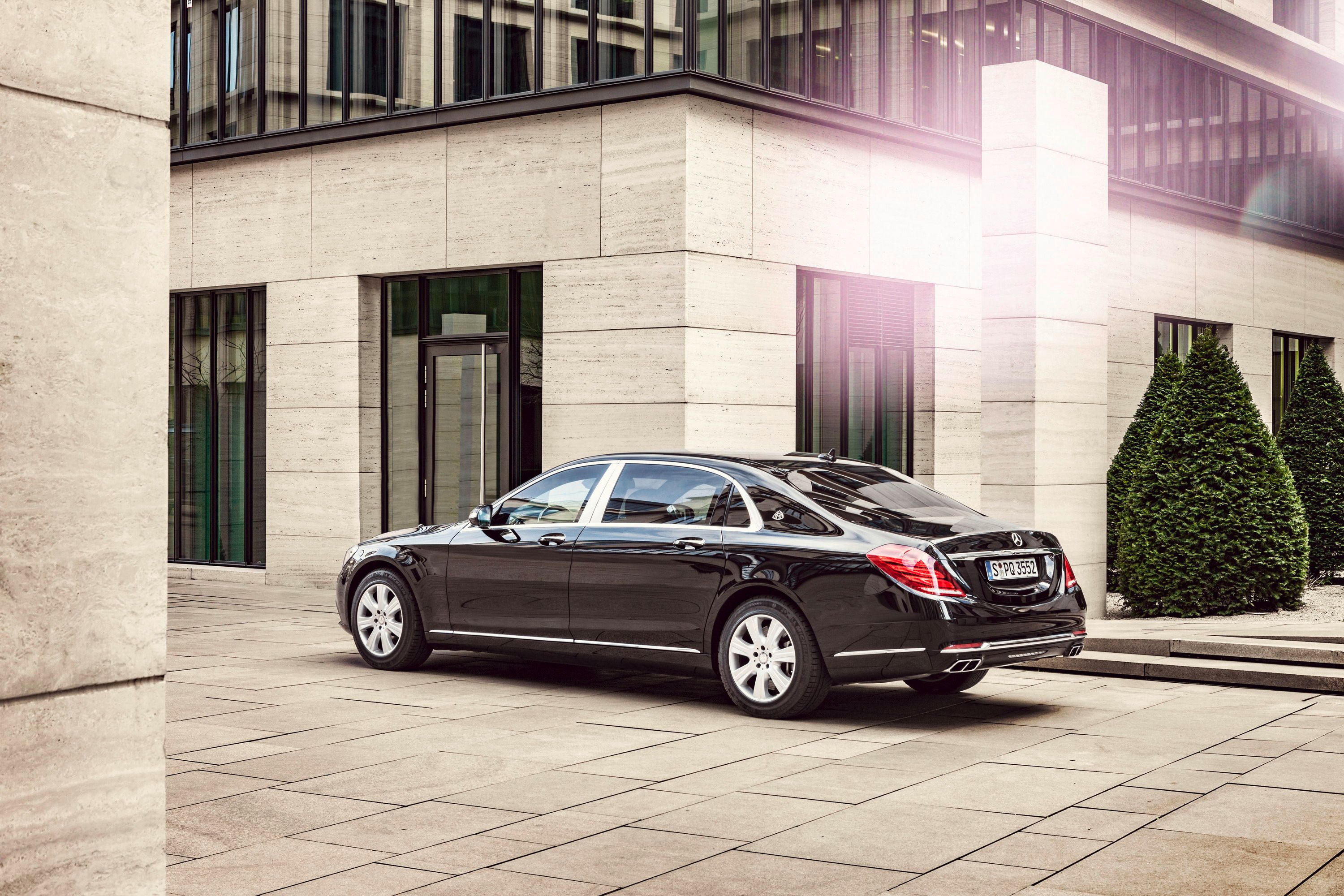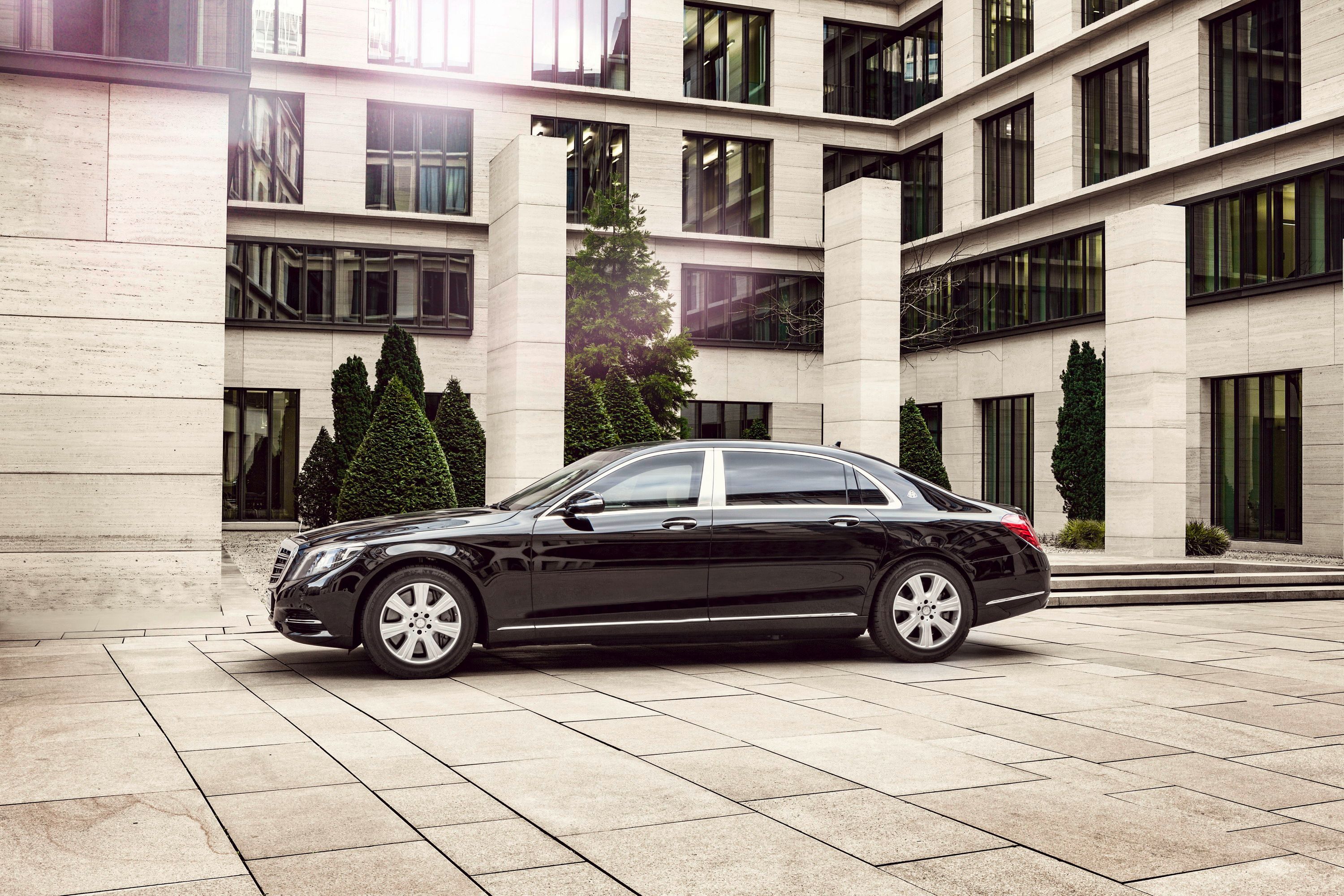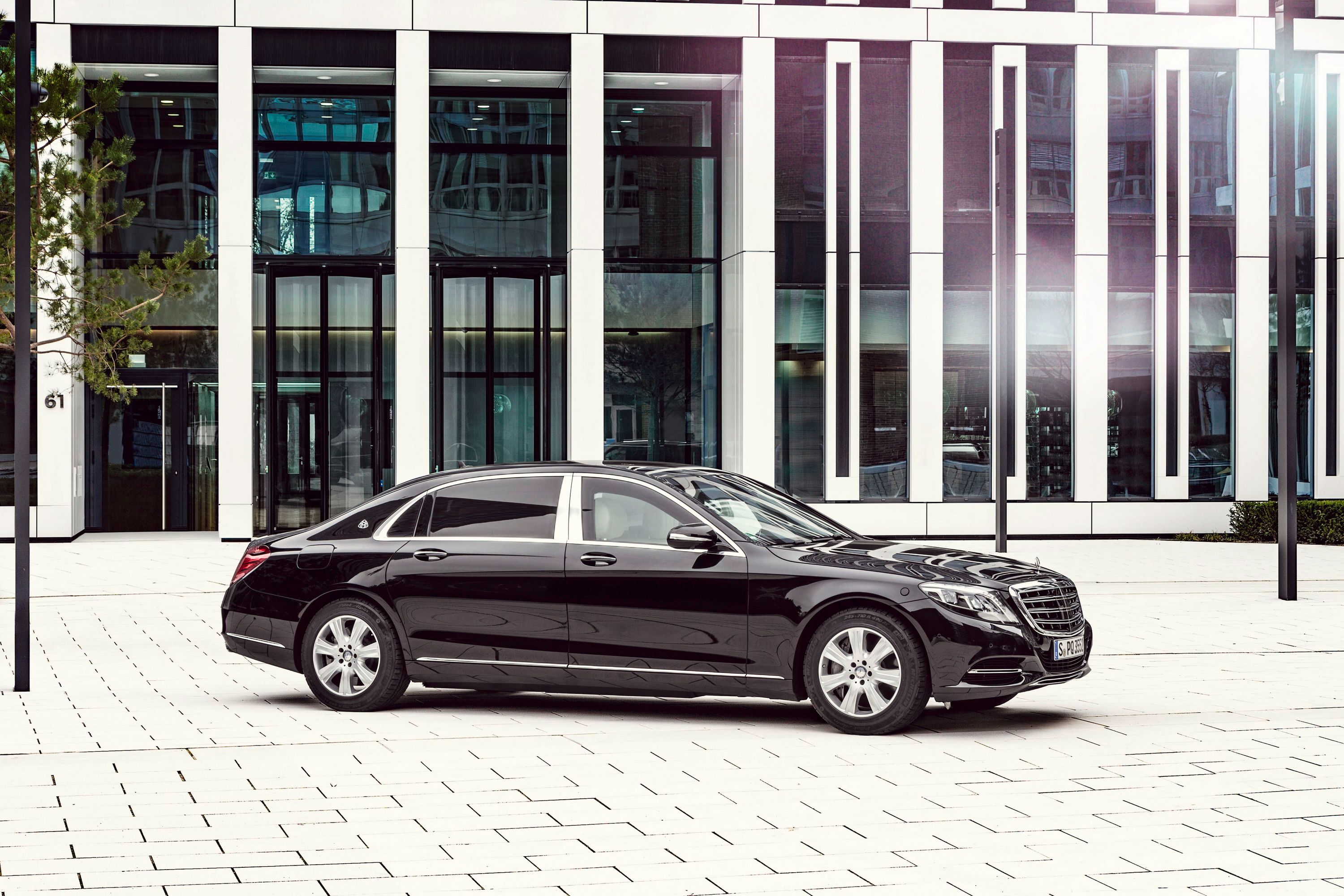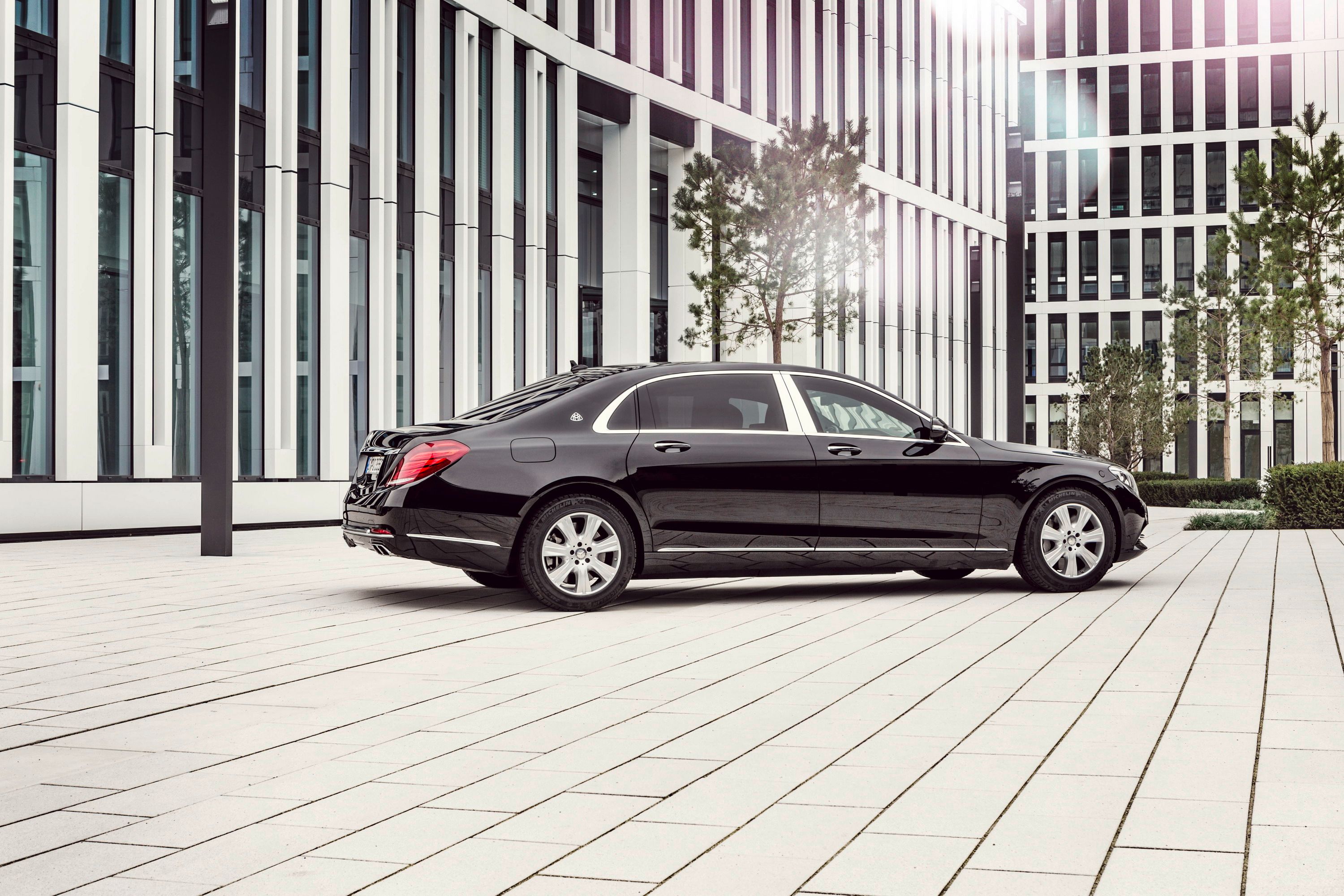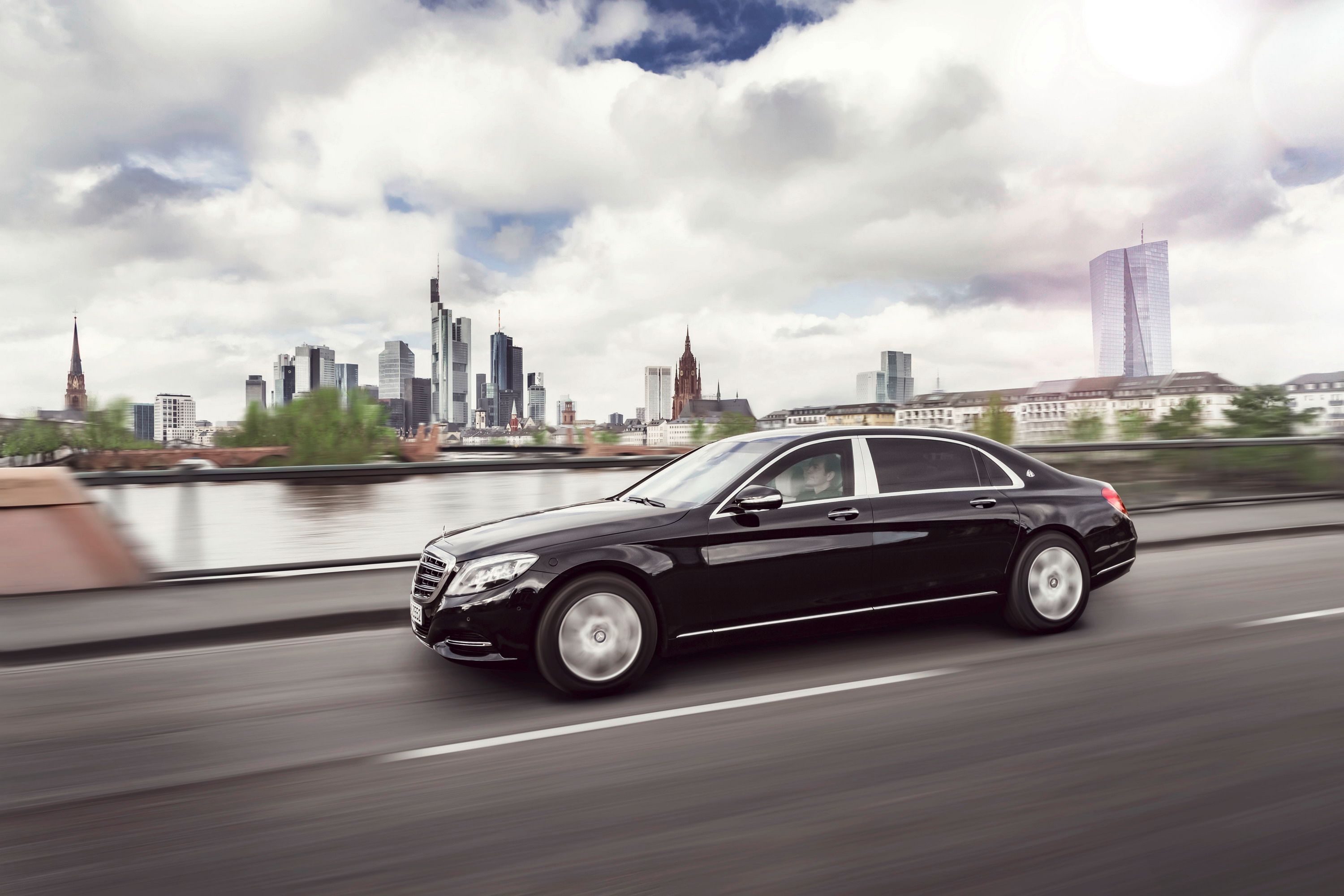Back in 2014, Mercedes->ke187 released the long-wheelbase S500->ke359 and long-wheelbase S600 that were fully certified as ballistic protection level VR9, which was the highest level of ballistics protection available for civilian vehicles at the time. Now, Mercedes has stepped its game up again with the Mercedes-Maybach S600 Guard – the first vehicle to be certified with ballistic protection level VR10.
Effectively combining the luxury of the S-Class with the exclusivity of Maybach, this S600 Guard has been extended to 5,453 mm long, with a wheelbase of 3,365 mm – 20 mm longer than the long-wheelbase S-Class sedan. The kicker here is that while the S600 Guard may be a bit longer, it's virtually indistinguishable, from the outside, as anything other than a standard long-wheelbase S-Class sedan.->ke142
As far as occupant protection goes, the S600 Guard offers the highest level of ballistic and blast protection available for a non-military vehicle. So, what went into making the S600 Guard the safest civilian vehicle available? Well, a lot of work went into making it that way, so keep reading to find out all of the juicy details.
Continue reading to learn more about the Mercedes-Maybach S 600 Guard.
2016 Mercedes-Maybach S600 Guard
- Make: Array
- Model: 2016 Mercedes-Maybach S600 Guard
- [do not use] Vehicle Model: Array
Exterior
As I mentioned previously, you can’t tell the vehicle in these images is an S600 Guard. Aside from a slightly longer length and wheelbase, from the outside, it looks like your everyday, long-wheelbase S600. First off, the base structure of the vehicle was strengthened during the production of the body shell, so from the very start, this S600 was special. By integrating special steel into the cavities between the body structure and the outer body skin, the overall strength of the vehicle was increased dramatically. To help make the vehicle more bulletproof, a special “intelligent” overlapping system was used at all critical points, such as body component intersections and material transition areas.
Special aramid and PE components, along with the “intelligent” overlapping, help to provide comprehensive protection against explosive devices. Underneath, new underbody armoring covers the entire underbody – protecting against explosives placed under the vehicle or on the road. This is a unique feature in the civilian special-protection segment, and surely raises the bar for civilian-based armored vehicles.
To be certified as VR10 compliant by the Ballistics Authority in Ulm, the S600 Guard has to be able to withstand hardened steel core bullets fired from an assault rifle. The testing and rating criteria for vehicles like this is a closely guarded secret, but we do know that all glass on the vehicle is fixed, and is coated with polycarbonate on the inside to prevent glass splintering in the event of an assault on the vehicle. Despite being laminated, the windows are exceptionally clear and do not give a hint as to their bulletproof nature.
Interior
Inside the S600 Guard, you’ll find a lot of the same design and styling cues as the normal S600. In the rear, however, the extra length gives more space to passengers. Two executive seats come as standard equipment in the rear, and there are other exclusivities like innovative voice amplification. Compared to the standard S600, the most noticeable difference inside is that the executive seats are positioned farther back to provide greater privacy – something made possible by the extra length associated with the S600 Guard.
Mercedes didn’t offer any further details about the interior, but as you can see from the image of the rear, it's rather spacious and luxurious with those seats positioned farther back. That long center console in the rear provides personal space for each rear passenger, and you really can’t tell that the car is an armored model. Each passenger has their own touch screen display mounted to the rear of the front seats. This screen provides information and control for the rear HVAC system and infotainment controls. It certainly goes without saying that the passengers of the S600 Guard will not only be protected, but they will be comfortable too, and you really can’t beat that.
Drivetrain
Mercedes didn’t dive into any specifics as far as the drivetrain goes, but it’s safe to say that the S600 Guard probably uses the same drivetrain from the Mercedes-Maybach S600. That means it comes equipped with a 6.0-liter, Biturbo, V-12 that produces 523 horsepower and 612 pound-feet of torque. In standard form, it can hit the 60 mph benchmark in 5.0 seconds, but when it comes to the S600 Guard, remember that all that armor comes with added weight – something that will undoubtedly slow the car down in terms of acceleration and top speed.
Mercedes didn’t divulge any information regarding the additional weight, but I wouldn’t expect the S600 Guard to hit 60 mph in less than 7 seconds. Even with a drop in acceleration capabilities, this is still a pretty quick unarmed civilian tank.
Prices
Remember when I mentioned that a lot of work went into armoring the S600 Guard and making it look like your everyday S600? Well, all that work becomes extremely apparent when you look at pricing for this beast. Unparalleled protection comes at a cost, and in this case, that cost comes to a wallet-crushing tune of €470,000, plus VAT. At current exchange rates (02/22/2016), that's precisely $517,822.50. For comparison purposes, the Mercedes-Maybach S600 commands a starting ticket price of $189,350 here in the U.S. So, all this armor comes at a cost of $328,472 – a pretty hefty sum, but who can really put a price on personal protection?
Competition
Audi A8 L Security
Since the Mercedes-Maybach S600 Guard is the first civilian vehicle to meet VR10 ballistic protection standards, it really doesn’t have any true-to-rights competitor at this very moment. That said, there is at least one model that's close – the 2016 Audi A8 L Security. As one of the most exclusive models in Audi’s lineup, the A8 L Security meets VR 9 ballistic protection standards and is a fair competitor to the S600 Guard. As far as Audi is concerned, the 2016 A8 L Security is the most secure model it's ever built, but with Merc stepping up with a VR10 compliant model, expect Audi to step up its game soon too.
For now, the A8 L Security is powered by a 4.0-liter V-8 that produces 435 horsepower and 442 pound-feet of torque. It can hit 60 mph in just 6.5 seconds on the way to a top speed of 130 mph. Now, the A8 L Security is said to be built with materials normally used in military vehicles and was built in a “secure, top-secret” factory. Audi has kept the price of the A8 L Security a secret, but a few Indian websites indicate a price between 1.2 and 9.2 Crores. At current exchange rates (02/22/2016), that would put the A8 L Security somewhere between $481,594 and $1,401,000. I would expect the A8 Security L to fall closer to the $481,000 range, but there is no official confirmation on pricing, as it's most likely on a need-to-know basis. At the lowest rumored price, that would make the A8 L Security about $35,000 cheaper than the S600 Guard. That sounds about right considering the lower ballistics rating.
Read our full review of the Audi A8 L Security here.
Conclusion
I think it's great that Mercedes managed to one-up its previous VR9-rated S500 and S600 sedans from 2014. Normally, I would rag on a special model being so much more expensive than its standard counterpart, but given the work and materials necessary to make a vehicle VR10 ballistics compliant, the excessive price is to be expected. The thing I dislike the most is the fact that we live in a world where some civilians actually have a need for a vehicle that is practically just as safe as those used to transport troops on the battlefield. With that said, I have to give it to Mercedes on this one. It did a fine job in maintaining a stock appearance while offering superior protection. If Audi is hoping for the A8 L Security to have its place in the civilian security market, it better step its game up, because Mercedes currently offers the best protection possible in the civilian sector.

